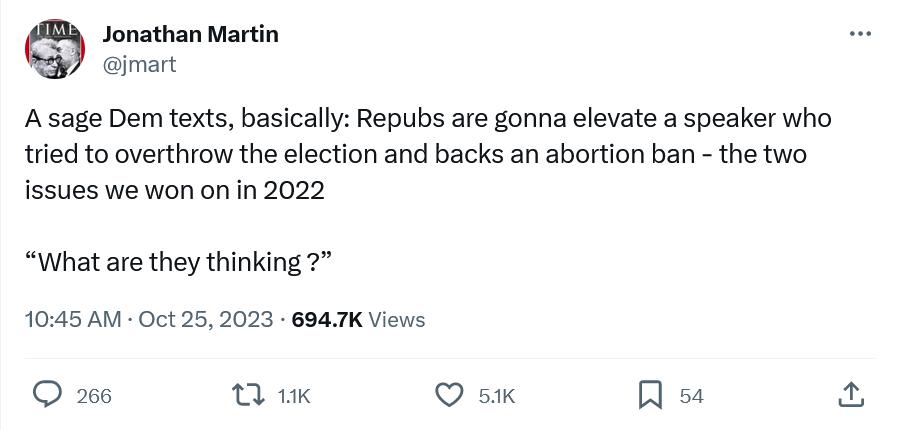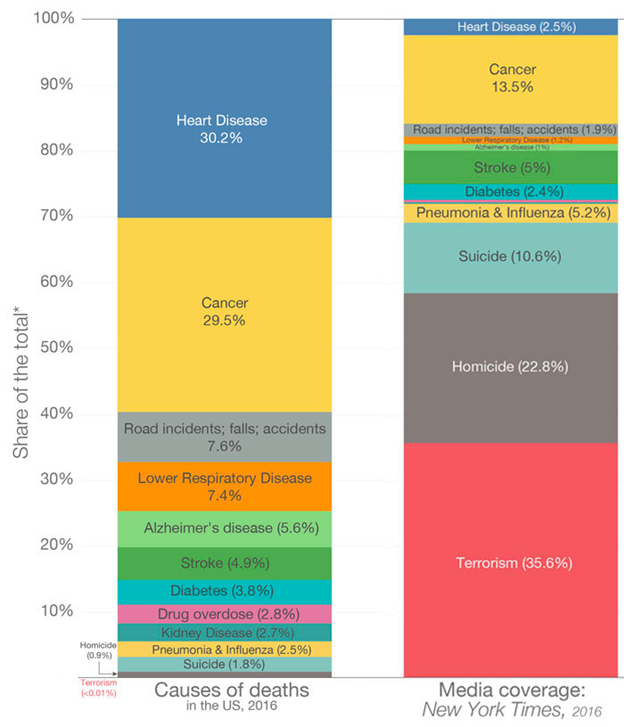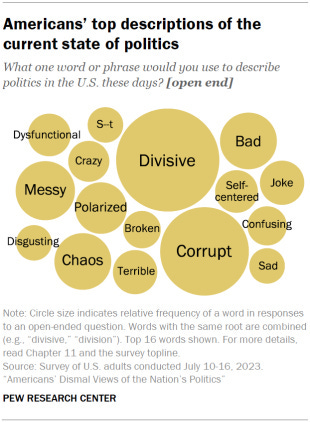The Daily Escape:

Tug pushing barge Tongass Provider in Dutch Harbor, AK. This is the last big load of the season heading north before ice prevents boat travel – October 29, 2023 photo by Richard McKinley. Note how small the trucks and RVs look relative to all of the goods on the barge!
Saturday is when the Wrongologist expects to offer his readers a chance to calm down after what has become our all-too-common weeks of domestic and international horrors. We call this the “Saturday Soother”, but this week, once again, it may prove difficult to find soothing.
Wrongo’s column on Tuesday ended by asking:
“Can Biden broker a peace when neither side wants one?”
Friend of the blog, Brendan K. who has military experience in the Middle East (ME) said in response:
“A peace does need to be brokered, but by Arab leadership with Israel. Biden has no relevance in the Arab World…”
The point is that the US cannot be a staunch supporter of Israel and also be an honest broker between the combatants. That the US isn’t trustable isn’t a new idea in the Middle East; this has been an issue in most conflicts involving Israel for decades.
But it seems that the window on a brokered end to hostilities in Gaza may not be open for long. The idea that Israel has crossed the line of proportionality in their attacks on Gaza is growing among western countries, while the idea that Arabs must stand in solidarity with Hamas vs. Israel also seems to be growing throughout the world.
We don’t need to look very hard to find examples of how US actions with Israel compromise its possible value to broker peace. The Intercept has a story about the US building a secret base inside Israel:
“Two months before Hamas attacked Israel, the Pentagon awarded a multimillion-dollar contract to build US troop facilities for a secret base it maintains…within Israel’s Negev desert, just 20 miles from Gaza. Code-named “Site 512,” the longstanding US base is a radar facility that monitors the skies for missile attacks on Israel.”
In addition to hosting a radar site that is pointed toward Iran, the Army is constructing a “life support facility” there, which is military-speak for barracks for personnel. All of this is despite Biden insisting that there are no plans to send US troops to Israel given the war on Hamas. But the Intercept claims that a secret US military presence in Israel already exists. Apparently sites like this can house as many as 1,000 troops.
Add what the NYT reported on Friday about US drones over Gaza:
“The US military is flying surveillance drones over the Gaza Strip, according to two Defense Department officials and an analysis by The New York Times. The officials said the drones were being used to aid in hostage recovery efforts, indicating that the US is more involved than previously known.”
The Defense Department told the NYT that these unarmed surveillance flights are not supporting Israeli military operations on the ground. Instead, the goal was to assist in locating hostages, and pass potential leads to the Israel Defense Forces (IDF). Wrongo finds the claim that these drones have a single mission to be laughable. In addition, several dozen American commandos are now on the ground in Israel. This view of drone flight patterns is from the NYT:

Flights shown here are from Oct. 28 to Nov. 2, of which at least six flights were over Gaza. Flight path data is from FlightRadar24. Paths are approximate based on each flight’s reported position about every minute.
Hassan Nasrallah, head of Hezbollah in Lebanon offered a warning to Israel and the US when he spoke for the first time since the start of the Israel/Hamas war. The WSJ had some key takeaways from his televised address:
- It isn’t yet time for a wider, regional war: “For those who say that Hezbollah should start a war in the entire region, I say wait. These are the beginnings.”
- Hezbollah had no advance knowledge of Oct. 7 attacks: The decision “was 100% Palestinian and it was this specific utmost secrecy which made it so successful.”
- Arab and Muslim states must enforce the diplomatic and economic isolation of Israel: “It is not enough to just issue statements.”
- Israel can’t eliminate Hamas: “One of the biggest mistakes that Israel is making right now is setting goals that it cannot achieve, such as eliminating Hamas and the power of Hezbollah.”
- There should be a cease-fire in the Gaza Strip: “The Arab and Islamic nations must at the very least make an effort to achieve a cease-fire, even if some of them do not want to…sacrifice anything.”
Nasrallah also cautioned Israel against launching a preemptive strike:
“I tell the Israelis, if you are considering carrying out a preemptive attack against Lebanon, it will be the most foolish mistake you make in your entire existence.”
Worse, the WSJ reports that the Wagner Group, the Russian mercenary outfit, plans to send air defenses to Hezbollah, which would be a major escalation in the Israel/Hamas war.
As expected, Netanyahu barked back with his own threat, warning Israel’s “enemies in the north” not to make the costly mistake of escalating the war:
“You cannot imagine how much this will cost you.”
It is very clear that Israel has forgotten 2006. Back then, Hezbollah attacked Israel, who responded by attacking civilian targets in Lebanon in an effort to make the Lebanese government and people think that Hezbollah brought death and destruction to their country. The opposite effect happened with most Lebanese Muslims increasing their approval or support for Hezbollah, while even Lebanese Christians, normally not friendly to Islamic parties or militias, blamed Israel for attacking civilian targets as an act of punishment.
Doesn’t that sound just like the Israeli strategy in Gaza today, 17 years later? US Secretary of State Blinken also issued a warning:
“With regard to Lebanon, with regard to Hezbollah, with regard to Iran, we have been very clear from the outset that we are determined that there not be a second or third front opened in this conflict. President Biden said on day one to anyone thinking of opening a second front, taking advantage of the situation, don’t. And we’ve backed up those words …with practical deeds.”
Wrongo is unsure what “practical deeds” Blinken is talking about. But it seems apparent that the warfighting strategy for Israel’s opponents is to continue to push the US into a position to overcommit until we can do no more. Wrongo thinks that Nasrallah will be reluctant to order a large missile attack against Israel because he knows that Israel will again attack Lebanese infrastructure with the complete blessing of the US.
As it presently stands, the Israel/Gaza situation is grim. There aren’t any reasons to expect Israel to voluntarily stop its ground operation, nor any indications as of yet that the Arab states are seriously considering attempting a diplomatic effort to achieve a cease fire.
Wrongo asked friend of the blog Brendan K. if he had an idea about how to extract Biden from the Israeli briar patch. And now Wrongo asks all readers: How/who has the ability to bring both sides to the table?
And here’s a music interlude that attempts to take our minds off of the ME for a few minutes. Watch and listen to “Hedwig’s Theme” by John Williams from Harry Potter performed at the BBC Proms Film Music night in 2011:













